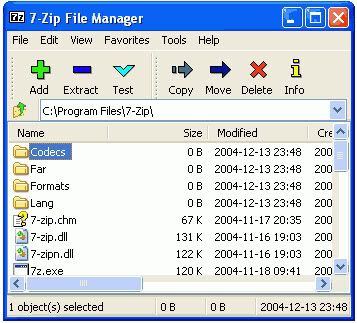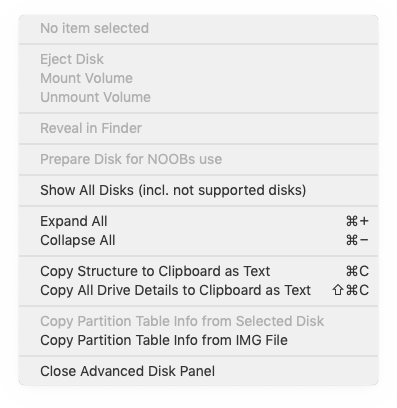Latest NewsTop Contributors
Popular TagsPlayer Model BGM Party Model GMD | Type: Game: Submit (46 results)
BMD MSG
TBL
PAK
CVM
TBL
RMD PAC ARC AMD BIN
EVT LSD
ACXPack LBPack ACX PAK BIN DDT This cheats and hacks you don't need to Root or Jailbreak your phone, and also you don't need to download anything like computer software or apk ipa files! Nitro type cheat codes.
CTD
|
Uncheck it and you shall see all the files on Vita memory card, connected via USB (or you can use Total Commander and unhide all the hidden and system files with a single click) It's a shame that most of the links in the tutorial are 404 now (had to find zzblank.img and Disk Imager software elsewhere and sd2vita driver is, I presume, this.

Img Tool Gta Sa
Feb 16, 2017 PSVIMG files are encrypted files generated by CMA in backing up and restoring data from the Vita. Data files for patches are located in the 'ux0:eex/data/' directory. You can 'sync'/'compile' patches with the ensoex app. Default patches. Clogo.e2xp: Use a raw RGBA 960x544 image as the bootlogo, it is located @'os0:bootlogo.raw'. In safe/update mode the PS logo is used. You can change it by replacing the file in 'ux0:eex/data' and syncing.
VPK is the homebrew package format and is an archive of the SELF along with data files and LiveArea and is done by the CMake macro vitacreatevpk. VPK is what is installed to the Vita as a bubble. To run homebrew, you need a hacked Vita or PS TV. Currently the only hack is HENkaku which requires firmware 3.60. This system is here to force you to update the Vita when a new version is available. In addition, it might be inconvenient for you to be constantly connected when you want to copy your files from and to the Vita. This patch is here to help you with this situation. Click here to Download Misc Tools. Vitaupdateblocker V1.2.
Required Reading

StorageMgr is a multi-purpose kernel plugin for the PS Vita (TV) which allows for the use of alternative storage devices such as a USB drive, an SD2Vita, or a psvd.
What Are Dmg Files
The SD2Vita is a microSD to game card adapter which is inserted into the game-card slot in your device, while the psvd is a microSD adapter which replaces the 3g modem on 3g PS Vita models.
By using the StorageMgr kernel plugin, the USB drive or microSD card you use will be mounted to ux0: just like a Sony memory card. This is very useful because microSD cards are significantly cheaper than Sony memory cards (especially at higher capacities).
This will use FTP (File Transfer Protocol) to transfer the files, so your Vita and PC must be connected to the same network.
You must have already installed VitaShell to use this.
What You Need
- A formatted storage device compatible with your system
- To format your device, see Storage Format (Windows), Storage Format (Linux), or Storage Format (Mac)
- An FTP Client such as WinSCP or CyberDuck
- Alternatively, you can also use the USB transfer feature of VitaShell
- The latest release of StorageMgr
storage_config.txtshould be edited to fit your situation as instructed in the READMEMCD=uma0should be kept as-is if you plan to keep a Sony memory card in your device, and removed otherwiseINT=imc0should be kept as-is for PS Vita 2000 and PS TV users, and removed for PS Vita 1000 usersGCD=ux0should be kept as-is for SD2Vita users, and edited toUMA=ux0for USB drive and psvd usersUMA=grw0should be removed unless you have multiple storage devices (in which case the device which is not assigned toux0:should be assigned togrw0:)
Ps Vita Img Tool Dmg File Download
Instructions
Section I - Installing Plugins
- Launch the VitaShell application
- Press (Select) to enable FTP access on your device
- Open your FTP client on your computer
- Enter the IP Address and Port displayed on your device
- Using your FTP client, copy all files from
ux0:tai/tour0:tai/- Overwrite any existing files in the
ur0:tai/folder - If you do not have a
ux0:tai/folder, skip this step
- Overwrite any existing files in the
- Transfer
storagemgr.skprxto theur0:tai/folder - Transfer
storage_config.txtto theur0:tai/folder - For any paths in
ur0:tai/config.txtwhich containux0:tai/, replaceux0:tai/withur0:tai/- If you did not have a
ux0:tai/folder, skip this step
- If you did not have a
- Add the following line to
ur0:tai/config.txtunder the*KERNELline:ur0:tai/storagemgr.skprx
- Delete the
ux0:tai/folder- This is an important step as HENkaku will not load plugins installed in
ur0:taiif it detects thatux0:taiexists
- This is an important step as HENkaku will not load plugins installed in
Section II - Restoring Data
This section will copy the data from your old Sony memory card to your new storage device.
- Backup the contents of
ux0:to a folder on your computer- This may take some time if you have a large amount of data on your Sony memory card
- Insert your new storage device into your computer
- Copy the contents of your
ux0:folder to your new storage device- This may take some time if you have a large amount of data on your Sony memory card
- Do not copy the
ux0:folder itself to your new storage device
- Insert your new storage device into your PS Vita (TV)
- Press (Circle) on your device to close the FTP connection
- Close the VitaShell application
- Reboot your device
- If your device does not have Ensō, you will need to manually launch and exit h-encore to enable homebrew
- This is required to load the new kernel plugins added to
ur0:tai/config.txt
If you want to reclaim the space on your memory card (to use for storing PSP games for instance), you can delete the contents of uma0: (the new memory card mount point) and / or imc0: (if you have a PS Vita 2000 or PS TV).

If you decide to do this, you must not delete these folders if they exist:
uma0:data/bootstrap.selfuma0:app/PCSG90096uma0:appmeta/PCSG90096uma0:appmeta/VITASHELLuma0:license/app/PCSG90096uma0:license/app/VITASHELLuma0:user/00/savedata/PCSG90096uma0:user/00/savedata/VITASHELL
This is because you must keep h-encore installed to the memory card so you can enable HENkaku (and therefore StorageMgr) after a reboot.

Img Tool Gta Sa
Feb 16, 2017 PSVIMG files are encrypted files generated by CMA in backing up and restoring data from the Vita. Data files for patches are located in the 'ux0:eex/data/' directory. You can 'sync'/'compile' patches with the ensoex app. Default patches. Clogo.e2xp: Use a raw RGBA 960x544 image as the bootlogo, it is located @'os0:bootlogo.raw'. In safe/update mode the PS logo is used. You can change it by replacing the file in 'ux0:eex/data' and syncing.
VPK is the homebrew package format and is an archive of the SELF along with data files and LiveArea and is done by the CMake macro vitacreatevpk. VPK is what is installed to the Vita as a bubble. To run homebrew, you need a hacked Vita or PS TV. Currently the only hack is HENkaku which requires firmware 3.60. This system is here to force you to update the Vita when a new version is available. In addition, it might be inconvenient for you to be constantly connected when you want to copy your files from and to the Vita. This patch is here to help you with this situation. Click here to Download Misc Tools. Vitaupdateblocker V1.2.
Required Reading
StorageMgr is a multi-purpose kernel plugin for the PS Vita (TV) which allows for the use of alternative storage devices such as a USB drive, an SD2Vita, or a psvd.
What Are Dmg Files
The SD2Vita is a microSD to game card adapter which is inserted into the game-card slot in your device, while the psvd is a microSD adapter which replaces the 3g modem on 3g PS Vita models.
By using the StorageMgr kernel plugin, the USB drive or microSD card you use will be mounted to ux0: just like a Sony memory card. This is very useful because microSD cards are significantly cheaper than Sony memory cards (especially at higher capacities).
This will use FTP (File Transfer Protocol) to transfer the files, so your Vita and PC must be connected to the same network.
You must have already installed VitaShell to use this.
What You Need
- A formatted storage device compatible with your system
- To format your device, see Storage Format (Windows), Storage Format (Linux), or Storage Format (Mac)
- An FTP Client such as WinSCP or CyberDuck
- Alternatively, you can also use the USB transfer feature of VitaShell
- The latest release of StorageMgr
storage_config.txtshould be edited to fit your situation as instructed in the READMEMCD=uma0should be kept as-is if you plan to keep a Sony memory card in your device, and removed otherwiseINT=imc0should be kept as-is for PS Vita 2000 and PS TV users, and removed for PS Vita 1000 usersGCD=ux0should be kept as-is for SD2Vita users, and edited toUMA=ux0for USB drive and psvd usersUMA=grw0should be removed unless you have multiple storage devices (in which case the device which is not assigned toux0:should be assigned togrw0:)
Ps Vita Img Tool Dmg File Download
Instructions
Section I - Installing Plugins
- Launch the VitaShell application
- Press (Select) to enable FTP access on your device
- Open your FTP client on your computer
- Enter the IP Address and Port displayed on your device
- Using your FTP client, copy all files from
ux0:tai/tour0:tai/- Overwrite any existing files in the
ur0:tai/folder - If you do not have a
ux0:tai/folder, skip this step
- Overwrite any existing files in the
- Transfer
storagemgr.skprxto theur0:tai/folder - Transfer
storage_config.txtto theur0:tai/folder - For any paths in
ur0:tai/config.txtwhich containux0:tai/, replaceux0:tai/withur0:tai/- If you did not have a
ux0:tai/folder, skip this step
- If you did not have a
- Add the following line to
ur0:tai/config.txtunder the*KERNELline:ur0:tai/storagemgr.skprx
- Delete the
ux0:tai/folder- This is an important step as HENkaku will not load plugins installed in
ur0:taiif it detects thatux0:taiexists
- This is an important step as HENkaku will not load plugins installed in
Section II - Restoring Data
This section will copy the data from your old Sony memory card to your new storage device.
- Backup the contents of
ux0:to a folder on your computer- This may take some time if you have a large amount of data on your Sony memory card
- Insert your new storage device into your computer
- Copy the contents of your
ux0:folder to your new storage device- This may take some time if you have a large amount of data on your Sony memory card
- Do not copy the
ux0:folder itself to your new storage device
- Insert your new storage device into your PS Vita (TV)
- Press (Circle) on your device to close the FTP connection
- Close the VitaShell application
- Reboot your device
- If your device does not have Ensō, you will need to manually launch and exit h-encore to enable homebrew
- This is required to load the new kernel plugins added to
ur0:tai/config.txt
If you want to reclaim the space on your memory card (to use for storing PSP games for instance), you can delete the contents of uma0: (the new memory card mount point) and / or imc0: (if you have a PS Vita 2000 or PS TV).
If you decide to do this, you must not delete these folders if they exist:
uma0:data/bootstrap.selfuma0:app/PCSG90096uma0:appmeta/PCSG90096uma0:appmeta/VITASHELLuma0:license/app/PCSG90096uma0:license/app/VITASHELLuma0:user/00/savedata/PCSG90096uma0:user/00/savedata/VITASHELL
This is because you must keep h-encore installed to the memory card so you can enable HENkaku (and therefore StorageMgr) after a reboot.
Your new storage device is now configured and ready for use at the mount point specified in your storage_config.txt.
